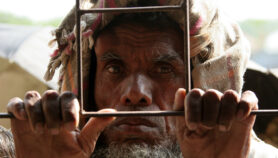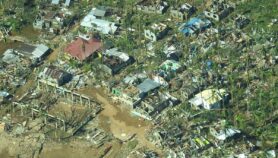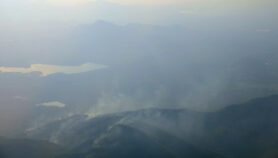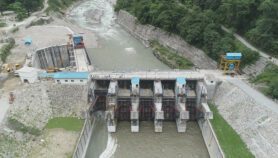By: Joel Adriano
Send to a friend
The details you provide on this page will not be used to send unsolicited email, and will not be sold to a 3rd party. See privacy policy.
[MANILA] Long before climate change became a buzz word, the Asia-Pacific region had gained a reputation as a natural disaster hotspot.
Over the past 45 years, the region accounted for 57 per cent of the world’s natural disasters, claiming two million lives and a staggering US$1.15 trillion worth of economic losses according to the United Nations Economic and Social Commission for Asia and the Pacific.
Climate change only made things worse for the region with natural disasters regularly striking Bangladesh, China, India, Indonesia, Japan, the Philippines and the small island states in the Pacific, particularly the Solomon Islands, Tonga and Vanuatu.
With increasing awareness of climate change and disaster risk mitigation, countries in the region are working towards building disaster resilience. Discussions are now on for regional-level disaster risk reduction (DRR) through an Asia-Pacific-wide technical group with the Philippines as a possible hub.
SciDev.Net interviewed Renato Solidum, director of the Philippine Institute of Volcanology and Seismology (PHIVOLCS), an agency under the Department of Science and Technology (DOST), to discuss the sharing of expertise, resources and experiences, and the establishment of a DRR Asia-Pacific regional centre hosted by the Philippines.
Why is there a need for a regional hub on DRR?
It’s rather simple. When we work together, we learn faster. When we share, we learn from each other’s mistakes and successes. It’s a win-win on learning. The centre will serve as a hub for exchanging information, knowledge and expertise, and will coordinate efforts in providing effective action. The more governments and sectors are involved the better as they will be better equipped to prepare for and mitigate disasters.
It also gives countries in the region the opportunity to align with global targets to reduce losses from disasters or even strongly influence and shape global plans and priorities.
At the ASEAN level there is currently a committee on disaster management but not yet on the Asia-Pacific region-wide level. The ASEAN experience should serve as a good model for enhancing partnerships and cooperation from all stakeholders including from the private sector and on collective response to disasters.
Why the focus on disaster risk and not the broader climate change?
Climate change and disaster risk cannot be separated. Both the events have been happening and causing deaths. Climate change is a long-term change while disasters are actual occurrence a number of which are a result of climate change.
The focus on disaster risk is to reduce exposure and vulnerabilities to natural hazards like earthquakes, storms, floods, tsunamis and droughts through proper planning, systematic analysis of risks, improving preparedness and early warning for such hazards.
Disaster risk reduction can be very technical and requires lots of research to produce data, and products for mitigation and application. This is also to differentiate with disaster risk management which looks at response and recovery using research and data to decide actions and policies and the products to use.
Why is the Philippines leading the DRR discussions and a candidate to become the DRR hub?
The Philippines wants to position itself as a regional and even a global hub for research on DRR. International experts recognise that the country is a natural laboratory for studying disaster risk since it is among the most vulnerable primarily because of its geographic location (it sits within the ring of fire which is susceptible to earthquakes and volcanic eruption, and it’s on the storm path originating from the Pacific).
It has experienced almost all types of disasters and has done extensive research on them. To cite a couple of examples, there was the 1991 Mt. Pinatubo eruption, one of the world’s largest volcanic eruptions in a century. In 2011 there was typhoon Haiyan, considered among the strongest storms to hit land.
If the Philippines becomes a hub, will it get regional or international funding? How can countries in the region especially developing ones allocate funds for climate change and cover DRR?
In planning to be a hub for climate change and DRR, the Philippines must consider investment and show commitment. Ideally, we must double the budget of the DOST each year for the next six years (enough to reach at least two per cent on R&D spending as a percentage of the gross domestic product).
In general, countries across the region should spend more on climate science and increase their budgets for DRR to facilitate better strategic planning and preparation. Ministries should exert more influence and demonstrate urgency to obtain better allocation. However, they should also be able to demonstrate improved efficiency, accountability, monitoring and evaluation especially of research projects to convince national budget planners, policy makers and funders.
There are also many things that can be done with collaboration. Research and training done together with other countries would eventually benefit the country, the region and their partners attracting more collaborations and funding.
This piece was produced by SciDev.Net’s South-East Asia & Pacific desk.














